Scoring is the final step before baking your bread. It controls how the dough expands in the oven, which impacts the loaf’s appearance, texture, and structure. In this guide, you’ll find the tools and tips you need to get great oven spring and improve your scoring technique.
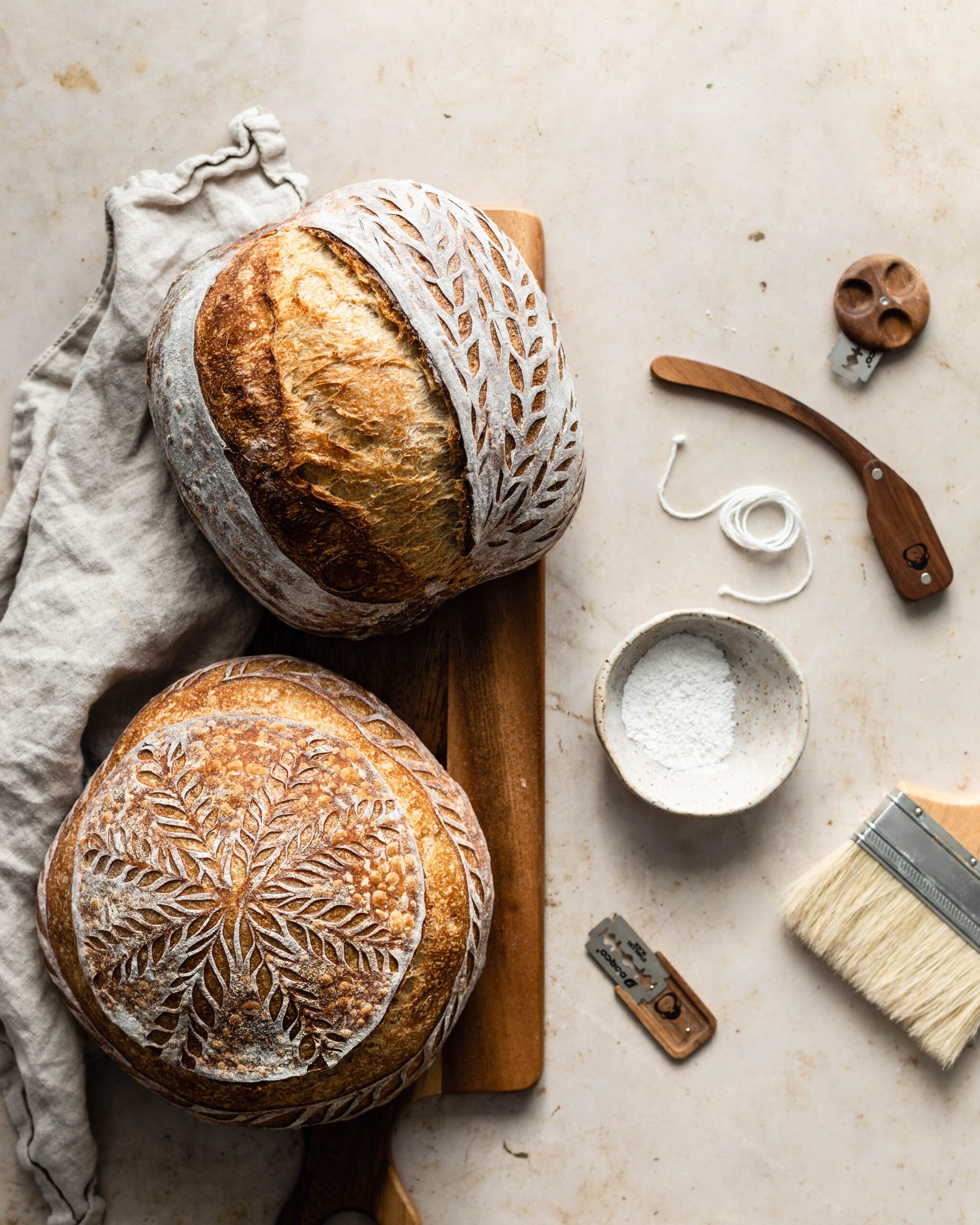
Sponsored by Wire Monkey I'm truly grateful for your support of the brands that help make Make It Dough possible. I want to assure you that all the recommendations and opinions expressed in this post are my own.
Jump to:
What is the purpose of scoring?
Scoring is the process of making shallow cuts in bread dough just before baking. During fermentation, yeast and bacteria produce carbon dioxide that gets trapped in the dough, causing it to rise. When the dough is placed in the oven, the crust forms while steam and gases inside expand rapidly in a phase called oven spring.
- Guides the final shape and appearance of the loaf
- Creates weak points in the dough for controlled expansion
- Prevents unwanted tearing or blowouts during oven spring
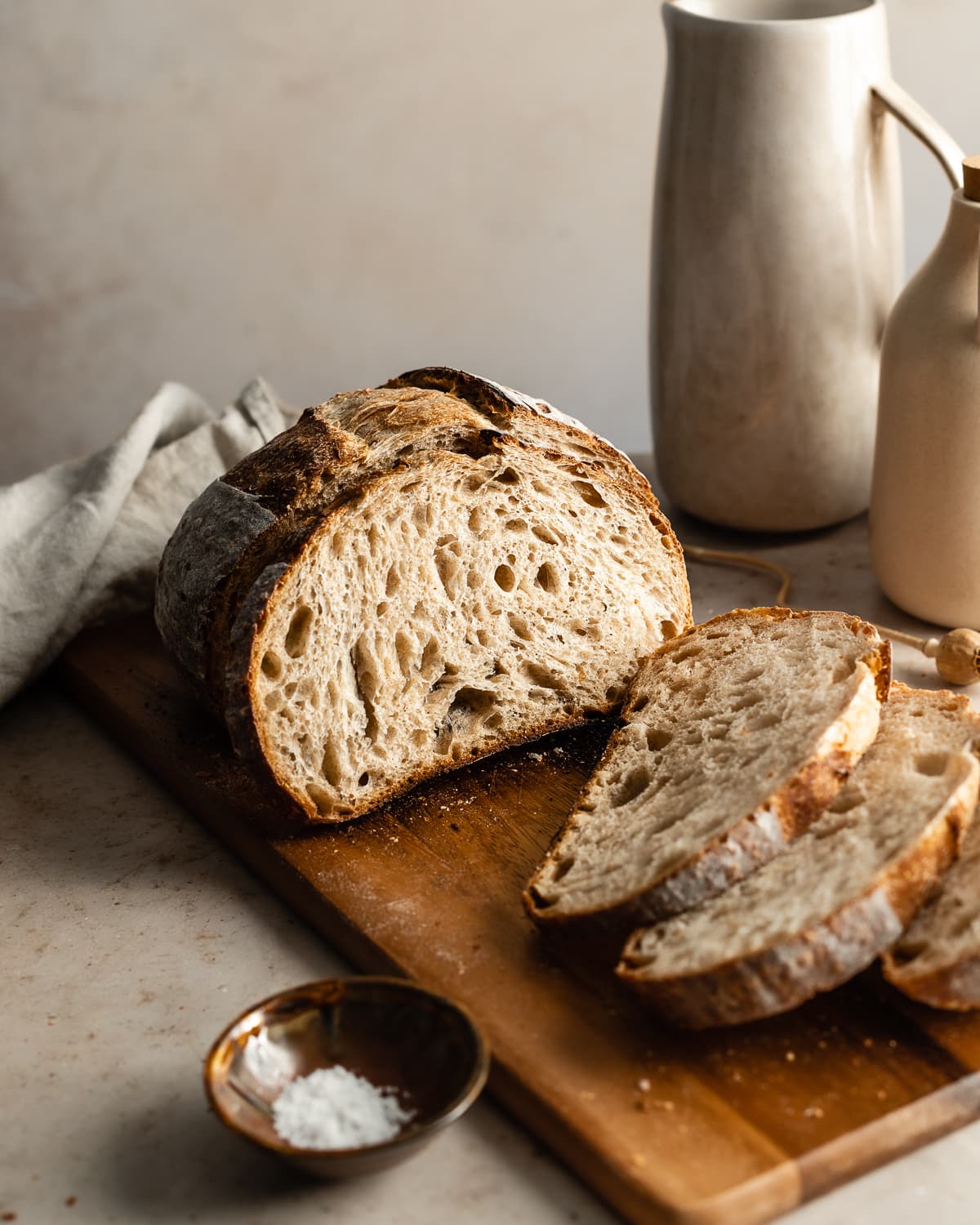
When should you score bread?
Dough should be scored immediately before it goes into the oven. I usually score my bread straight from the refrigerator right after cold proofing.
Here’s a simplified overview of the key steps:
- Make the dough
- Score the dough just before baking
- Bake and enjoy the beautiful oven spring
Bread scoring tools and equipment
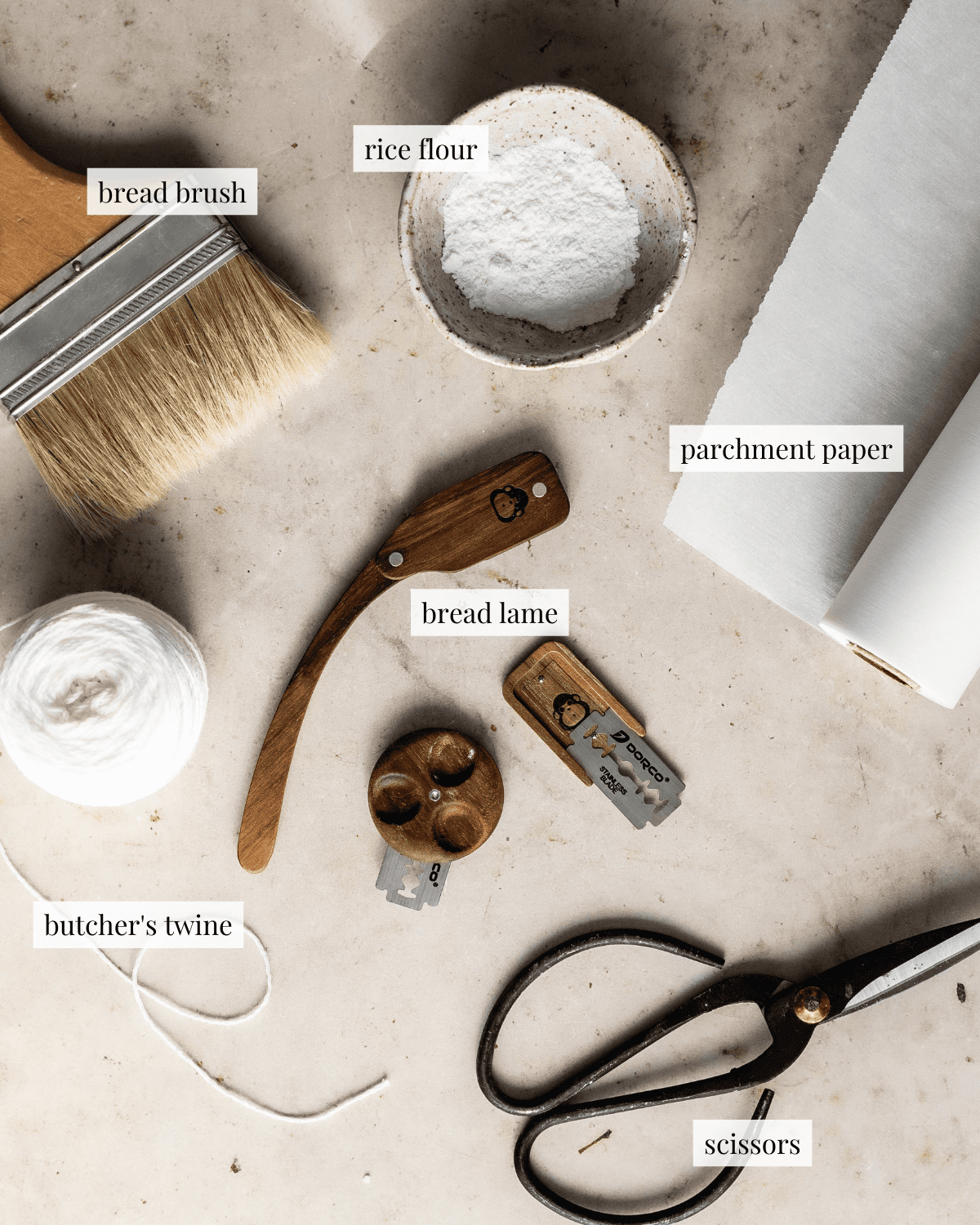
Wire Monkey Shop Lame - a specialized tool specifically designed for scoring dough. It allows you to safely hold a thin sharp scoring blade required for cutting clean lines on dough. It's best to purchase a reusable lame that can be fitted with fresh sharp blades.
Double-edged razor blade - you need a blade with an extremely thin and sharp edge to cut through wet dough. Even the sharpest knife blade is too thick, and will likely drag on your dough and cause jagged cuts.
Rice flour - dusting a little bit of rice flour on your dough before scoring, creates contrast that will highlight your design. Because it doesn’t scorch in the high temperatures of the oven, it stay lighter in color and won't make your loaf taste burnt.
Parchment paper - makes transferring your dough to your Dutch oven or baking vessel much easier
Butcher’s twine or thread - marks guidelines on your dough that will help with creating decorative scoring patterns
Kitchen shears - snips dough for smaller, deeper cuts
Brush - for brushing away any excess flour that’s caked on proofed dough
Elements of scoring
Scoring might seem simple, but it requires strategy. Cuts must be deep and large enough to let the bread expand fully without tearing or flattening.
- Essential Cut: The largest and deepest—usually a long slash that guides the loaf’s expansion and helps it maintain its shape. For example, a single long cut on a batard allows it to rise evenly and keep its oval form.
- Decorative Cuts: Smaller, shallower cuts that don’t affect the loaf’s structure but provide visual interest.
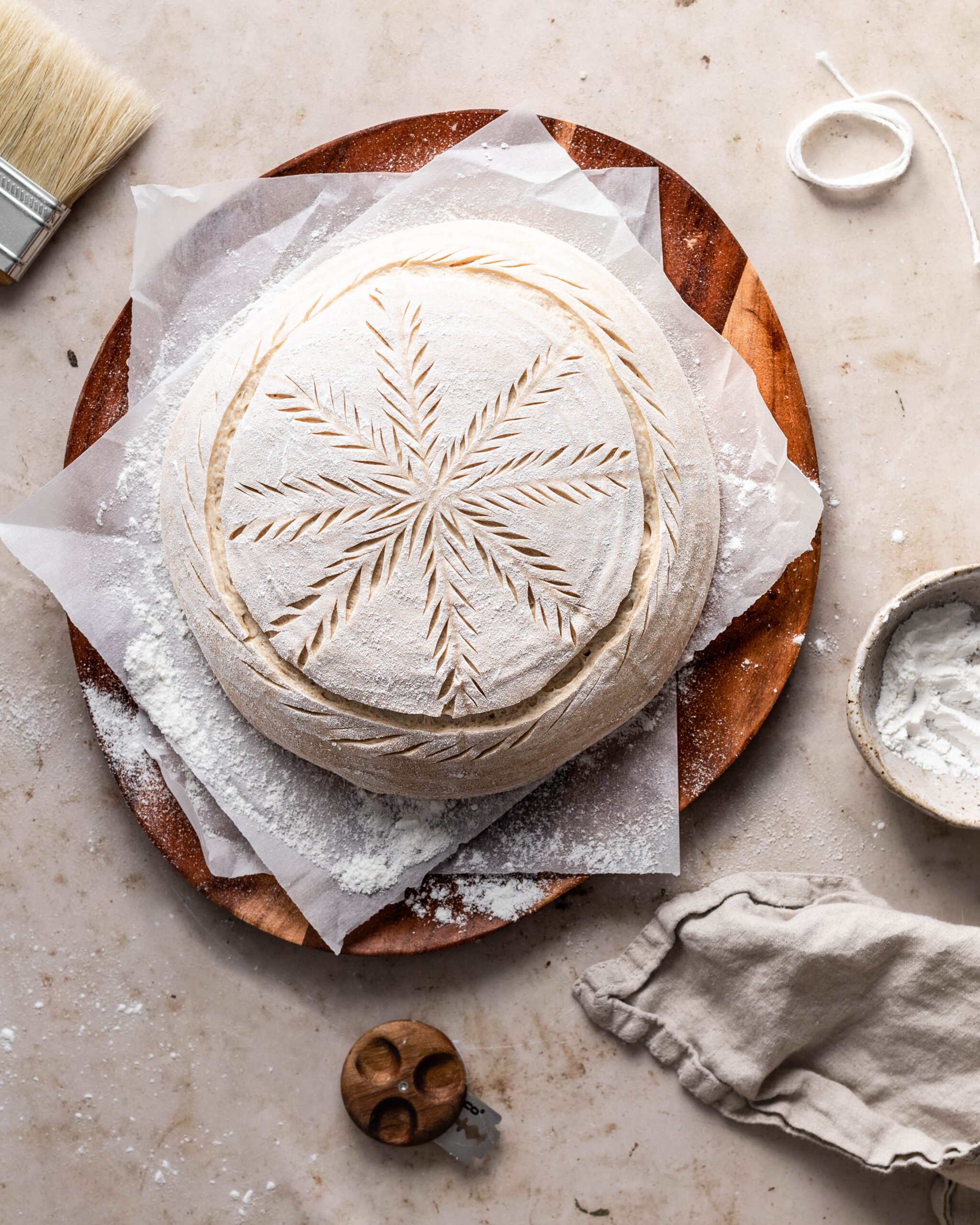
Ready for a creative challenge? Test your bread scoring skills by creating a Pumpkin-shaped Sourdough Bread.
Step-by-step bread scoring guide
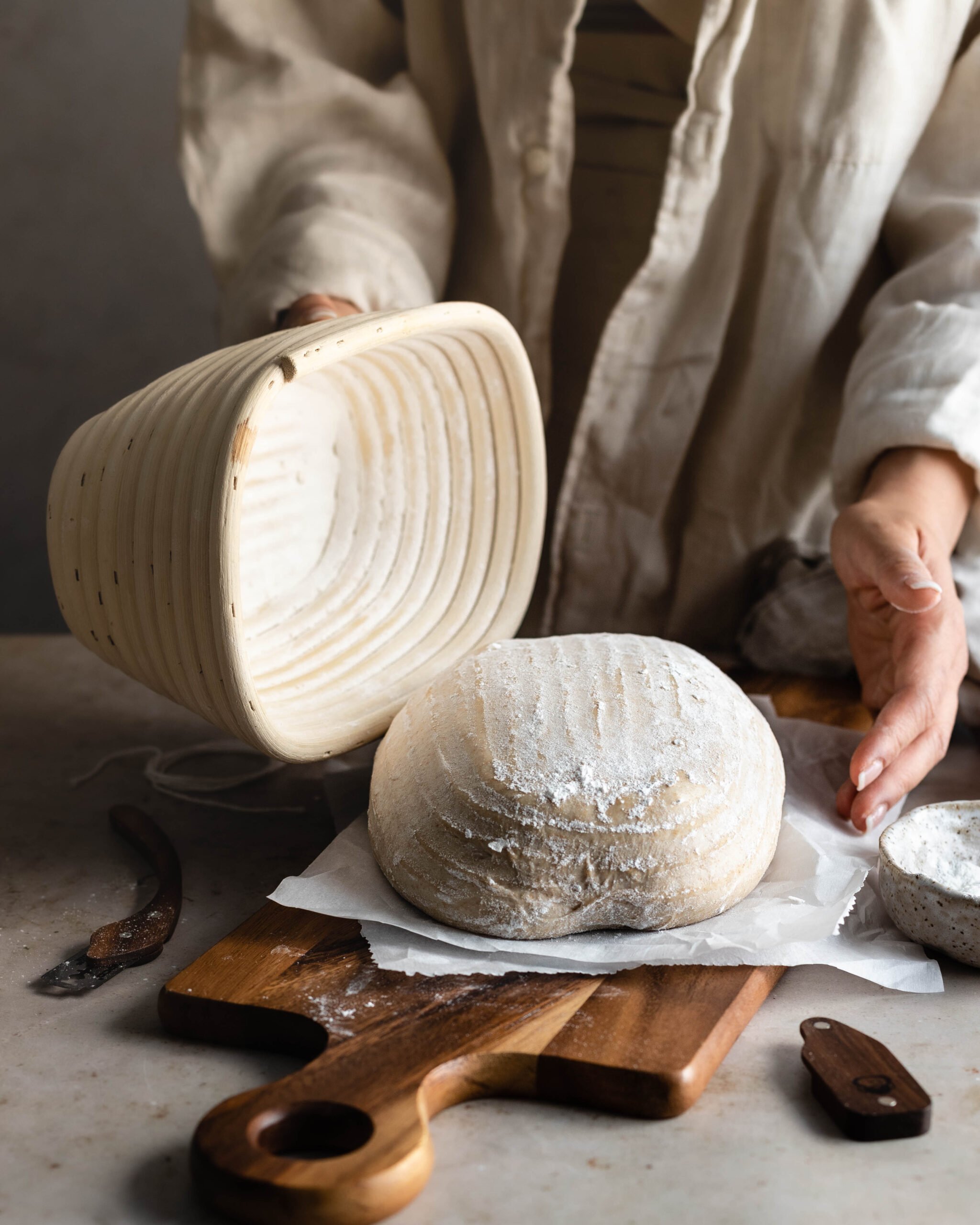
STEP 1. Turn the dough out of the proofing basket over a piece of parchment paper
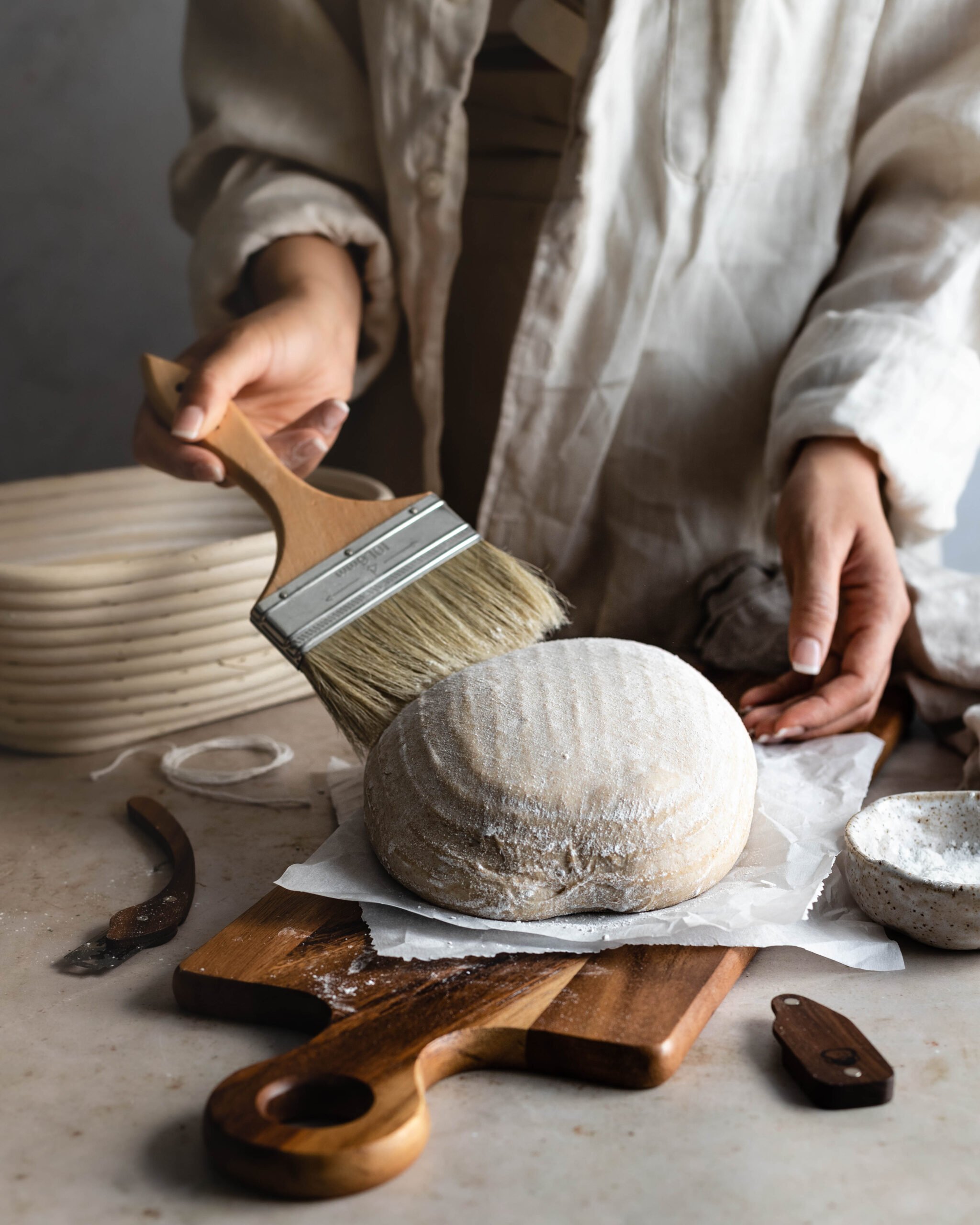
STEP 2. Brush away any flour that may have hardened or caked on your dough
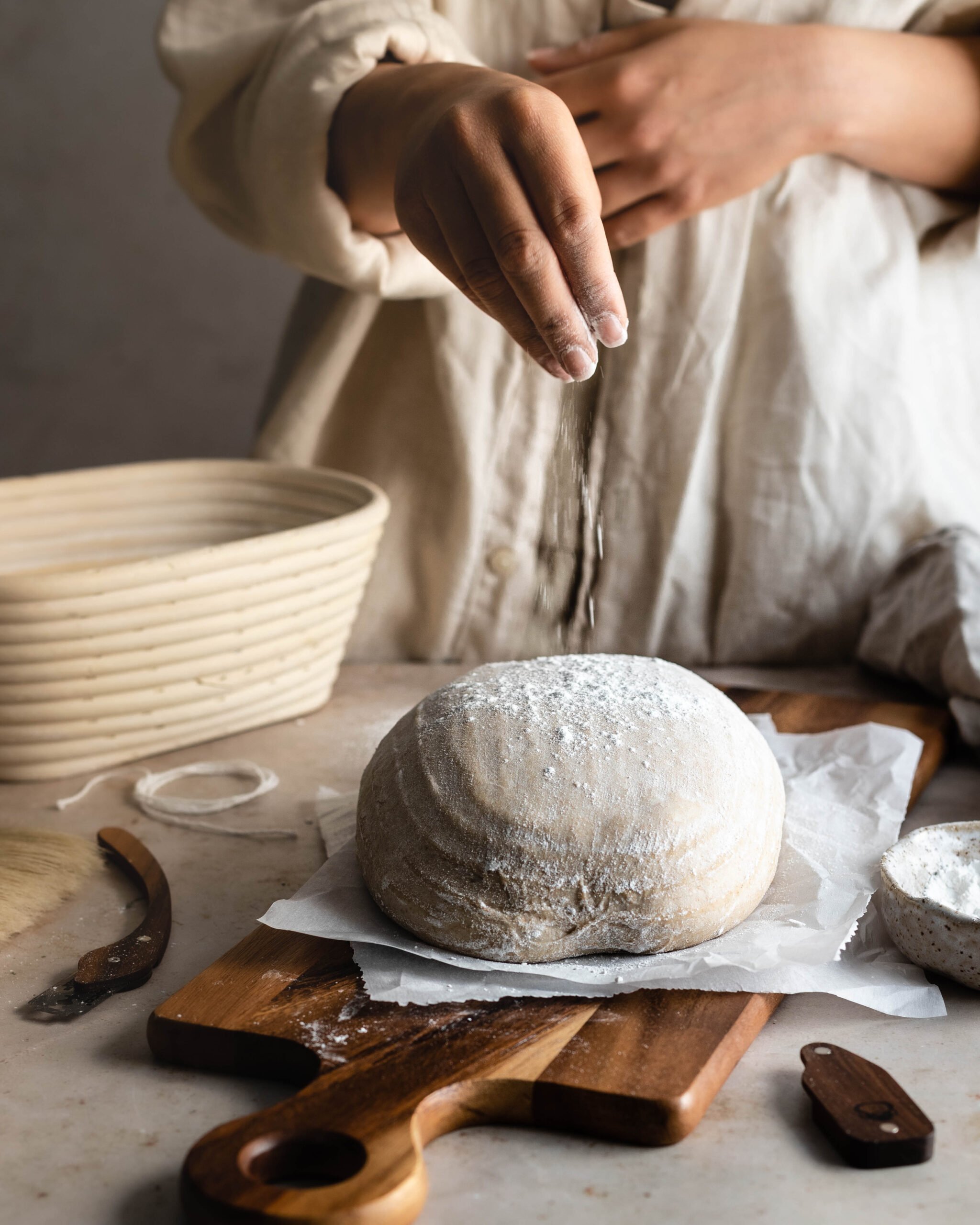
STEP 3. Dust the surface of the loaf with rice flour and smooth it on top with the palm of your hand (unlike white flour, rice flour won't score in the oven and will remain light colored)
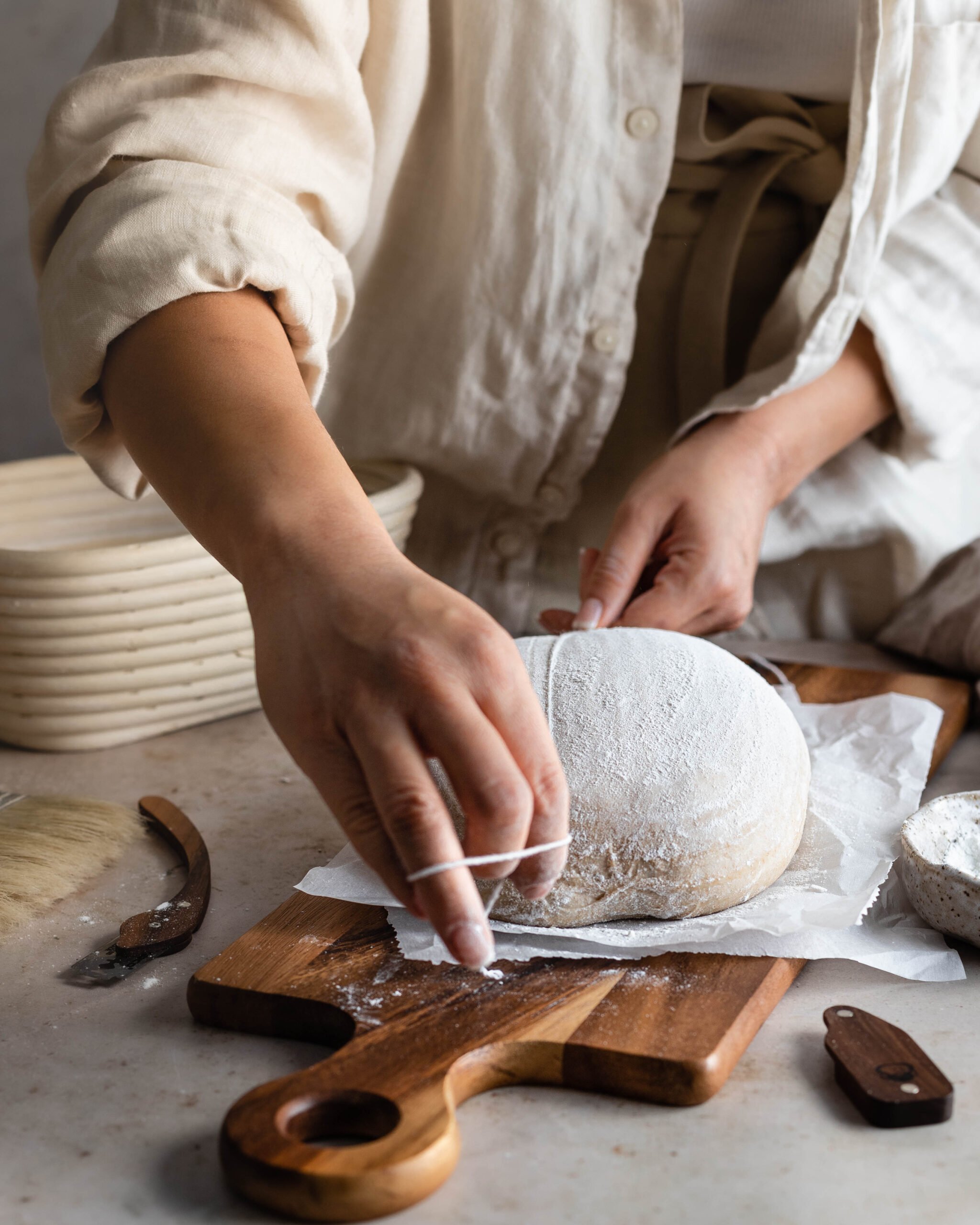
STEP 4. Using a piece of string held tight leave an imprint on top of the dough to create a guide for your design

STEP 5. Using a lame fitted with a sharp razor blade, cut a deep score about ¼ to ½ inch in depth
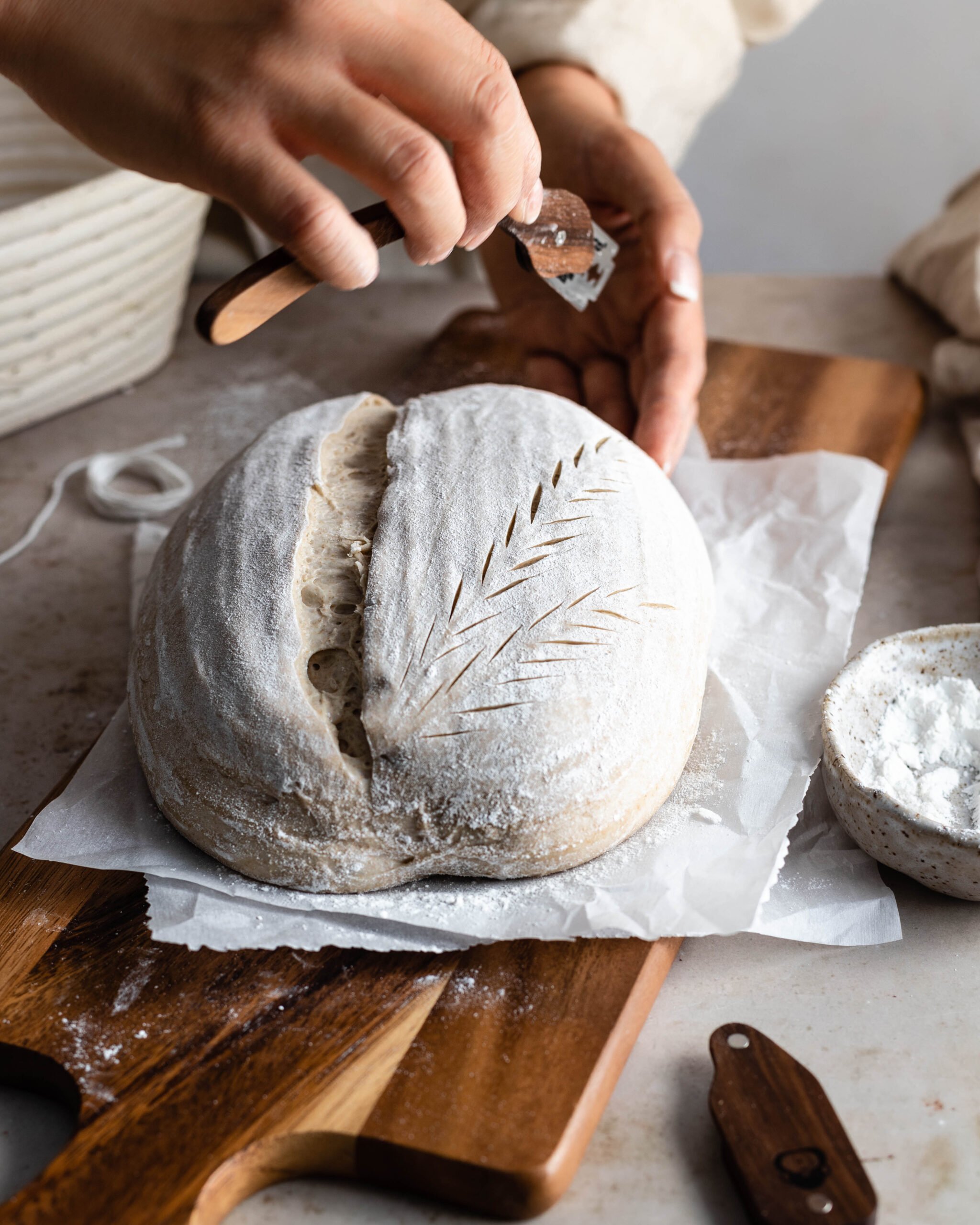
STEP 6. Create your design using quick, confident, shallow cuts
How to score an ear
An “ear” refers to the crisp, raised edge that forms along the main score of a loaf during baking—it's a rustic feature many bakers aim for. Unfortunately, there’s no single trick to achieving it. An ear is the result of several factors working together, from fermentation to scoring technique. Here's what you need to get right:
- Nail fermentation: Properly fermented dough is key—under- or over-proofed loaves won’t develop an ear.
- Build strength and tension: Strong gluten and surface tension help the dough rise and hold its shape.
- Bake at the right moment: Time your bake when fermentation has peaked but before the yeast exhaust their food supply.
- Score at a 45° angle: A shallow, angled cut encourages the ear to lift rather than collapse.
- Use steam: Steam delays crust formation, giving the dough time to expand fully in the oven.
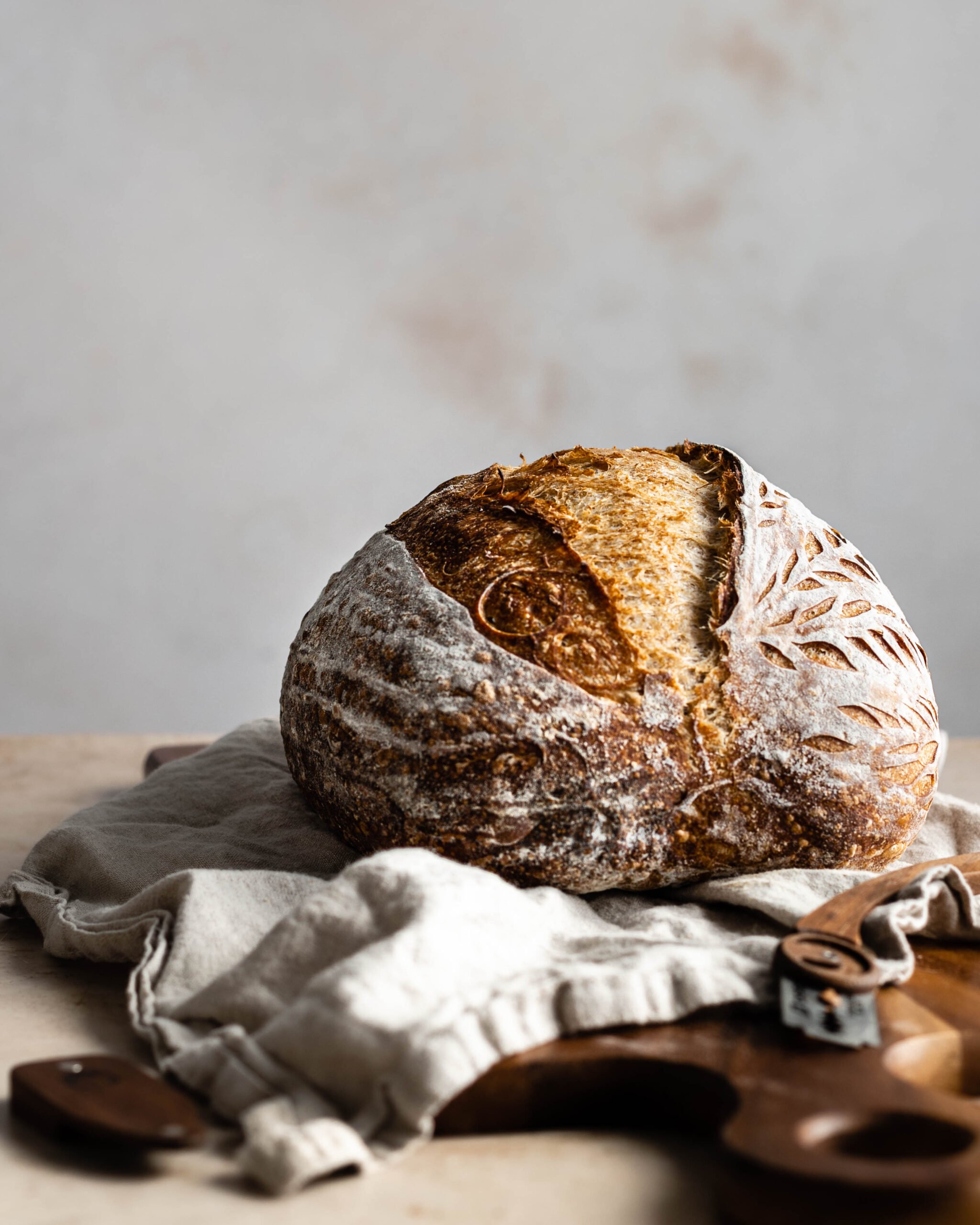
Try your scoring skills on my Basic Sourdough Bread or Spelt Sourdough Bread recipe!
Expert Bread Scoring Tips
Score directly from the refrigerator - cold dough is much easier to score, and the contrast in temperature will help with the dough rise even higher.
Use a specialized tool - even the sharpest bread paring knife won’t have an edge that can neatly cut through wet dough. The sharp, thin edge of a double-edged blade will prevent your dough from dragging and a bread lame will allow you to safely hold the sharp blade.
Create a score that’s wide enough and deep enough to allow your bread to rise - your essential cut should be at least ¼ to ½-inch deep and should be large enough to allow your bread to rise fully. If you fail to score your dough enough, your bread may burst.
Don’t score your dough too aggressively - the depth of the cut matters, if you cut too deep into your dough it may destroy the structure you’ve worked so hard to create during the bread making process.
Coat your blade in a thin layer of oil - if you find that your blade drags while you’re scoring, rub a little bit of oil on your blade to help it glide smoothly through your dough
Make quick, confident cuts: scoring too slow will cause even the sharpest blade to drag and leave ragged marks on your dough
Bake your dough right away - letting your dough sit for too long before putting it in the oven may cause it to deflate and lose its strength.
Bread scoring patterns
Now that you know the basics of scoring, your bread can serve as a blank canvas where your creativity can run wild. Remember that the main goal of scoring is to take full advantage of oven spring in a way that helps bread maintain its shape.
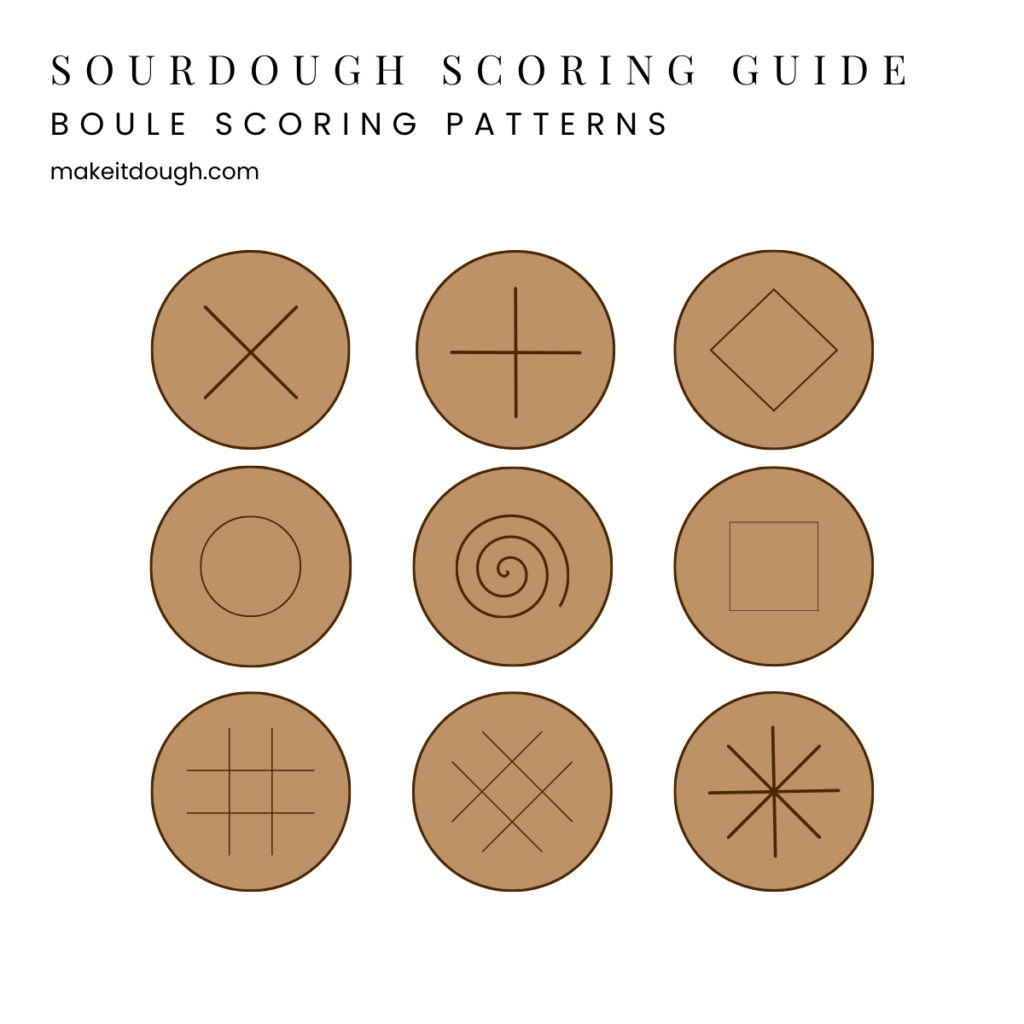
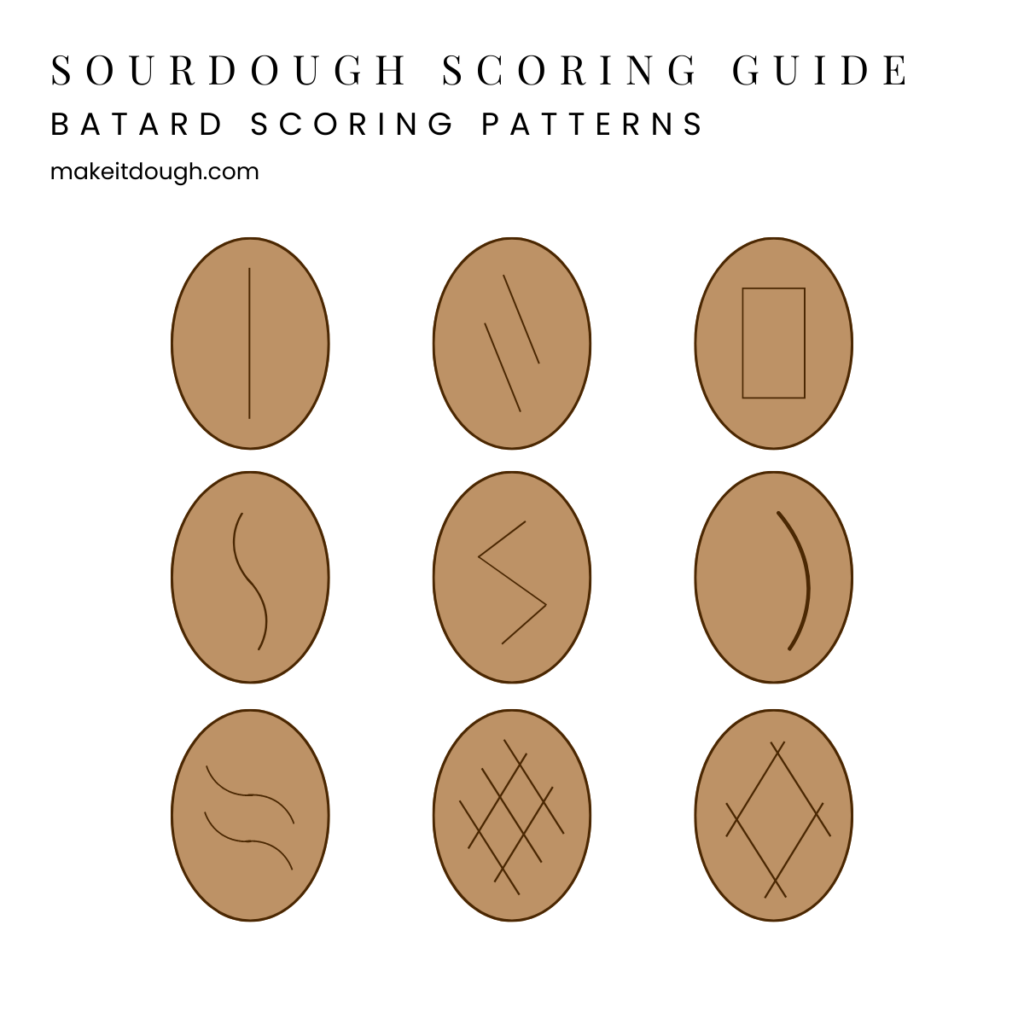
Knead More Help?
Have more questions about this topic? Let me know in the comments!
Pin this post on Pinterest for easy access anytime!
Share your baking triumphs on Instagram - don't forget to tag @makeitdough, I love showcasing your bakes in my stories!
⭐ THANK YOU ⭐
.



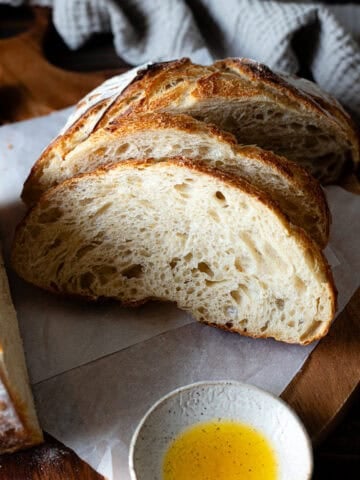
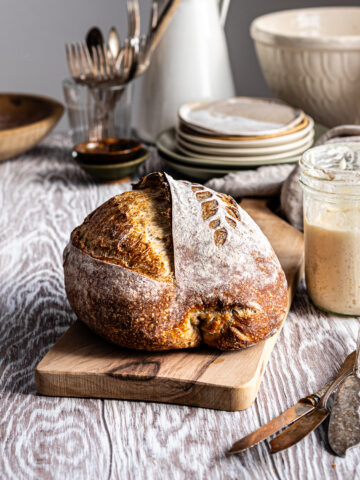
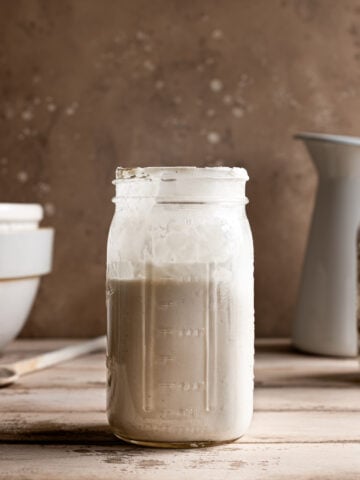
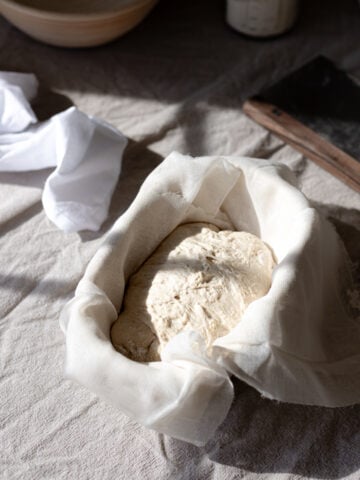
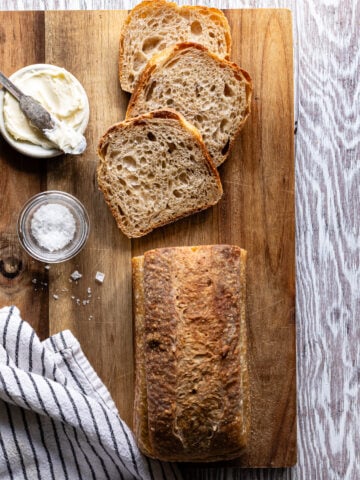
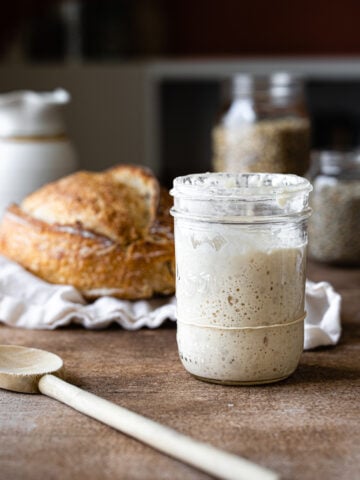
Talia says
Hi! I tried decorative scoring with about 6-8 small slashes and they turned into a full deep score in the oven (along with my intentional deep score). Did I slash too deeply?
Hannah Dela Cruz says
It may be because your dough was a little under proofed. This can cause the bread to expand wildly and will have the tendency to ruin the scoring design. How was the interior of the loaf?
Amy says
Any tips on how to safely keep blade of lame clean? What’s the best way to safely store it?
Hannah Dela Cruz says
I usually store my blades within my lame - which is easy to do in a Wire Monkey Shop lame. You can wipe it with a damp paper towel.
Darla says
After I take my sourdough from the refrigerator in the morning, I put my oven on "proof" and add a baking pan with water under my loaf pans. when they have risen beautifully, it's time to score them. the problem is, the tops of the loaves are too dry to score correctly. what am I doing wrong?
Hannah Dela Cruz says
Hi Darla - depending on where you live the proof setting even with a water pan inside may not be enough humidity to prevent the top of the dough from drying out. However, you do want the dough to be a little dry to some degree. It doesn't need to be sticky or tacky.
Lindy says
I make sandwich bread but don’t typically put it in the fridge at all before baking. How long should I put it in the fridge before scoring it?
Hannah Dela Cruz says
You can just score your bread without putting it in the fridge. If you want the dough to be a bit stiffer when you score, you can throw it in the freezer for 15 minutes before scoring (it should be fully proved).